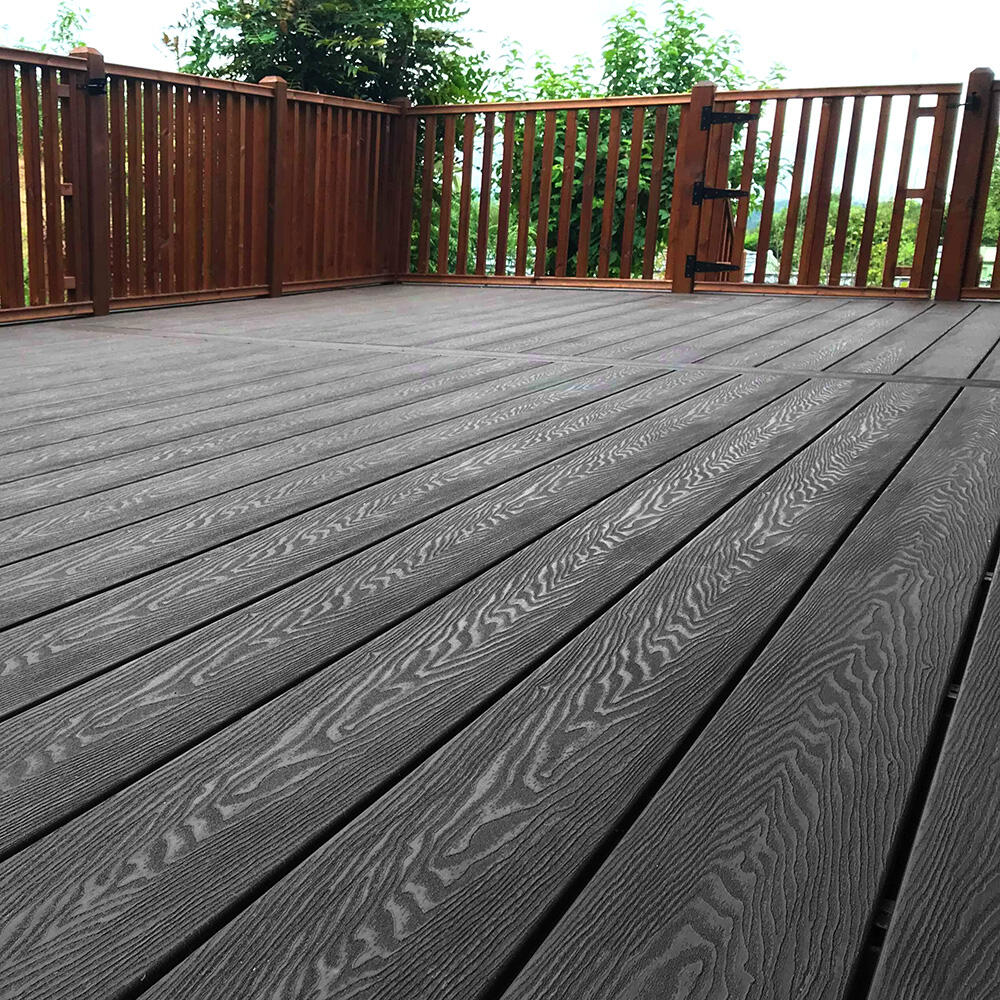Transform Your Property with Seamless Outdoor Integration
The evolution of exterior design has brought forth innovative ways to create stunning, cohesive spaces that blur the lines between indoor and outdoor living. Composite decking and cladding have emerged as revolutionary materials that enable homeowners and architects to achieve seamless design continuity while enjoying exceptional durability and minimal maintenance requirements. This comprehensive guide explores how these versatile materials can be combined to create stunning, unified spaces that elevate both aesthetics and functionality.
Modern architectural design increasingly emphasizes the importance of creating fluid transitions between different areas of a property. By utilizing composite decking and cladding in complementary ways, you can establish a sophisticated visual connection that enhances your property's overall appeal and value. The thoughtful integration of these materials allows for creative expression while maintaining practical benefits that traditional materials simply cannot match.
Understanding Material Synergy
The Evolution of Composite Materials
Composite decking and cladding represent the pinnacle of material innovation in exterior design. These engineered products combine recycled wood fibers and plastic polymers to create surfaces that outperform traditional timber in nearly every aspect. The manufacturing process allows for consistent quality, color stability, and superior resistance to environmental factors that typically deteriorate natural wood.
Modern composites have overcome the artificial appearance that characterized earlier generations of these materials. Today's products feature sophisticated grain patterns, rich colors, and textures that convincingly mimic premium hardwoods while offering substantially better longevity and performance characteristics.
Design Compatibility Factors
When integrating composite decking and cladding, success lies in understanding how different elements work together to create visual harmony. Color matching plays a crucial role, but equally important are texture combinations, pattern alignment, and the strategic use of contrasting elements to create interest without disrupting the overall design cohesion.
Professional designers often recommend selecting materials from the same manufacturer's collection to ensure perfect color matching and compatible texture profiles. This approach simplifies the design process while guaranteeing that different components will age consistently over time.
Strategic Design Implementation
Vertical and Horizontal Integration
The interplay between vertical cladding and horizontal decking surfaces creates dynamic visual interest while maintaining design continuity. Careful attention to transition points ensures smooth visual flow between different planes. Consider how light interacts with different surface orientations throughout the day to maximize the aesthetic impact of your design choices.
Strategic implementation might involve wrapping deck edges with matching cladding material or extending cladding elements to create privacy screens that complement the decking below. These techniques create a sophisticated, architecturally integrated appearance that elevates the entire property.
Color and Texture Coordination
Successful integration of composite decking and cladding often relies on thoughtful color selection. While exact matching creates seamless continuity, controlled contrast can add visual interest without compromising cohesion. Consider using complementary shades within the same color family or introducing subtle texture variations to create depth and dimension.
Many designers recommend selecting a primary color for large surfaces and incorporating accent colors through smaller architectural elements. This approach maintains visual harmony while preventing the design from appearing monotonous.
Performance and Maintenance Considerations
Weather Resistance and Durability
One of the primary advantages of combining composite decking and cladding is their matched performance characteristics. Both materials are engineered to withstand harsh weather conditions, resist fading, and maintain their appearance with minimal intervention. This consistency in performance ensures that different elements of your design will age gracefully together.
Unlike traditional wood products that may weather differently based on exposure and orientation, quality composite materials maintain their appearance regardless of their application. This predictability makes it easier to maintain design cohesion over the long term.
Long-term Care Requirements
The maintenance requirements for composite decking and cladding are remarkably similar, simplifying long-term care routines. Regular cleaning with soap and water is typically sufficient to maintain appearance, while periodic inspections help identify any issues before they become significant problems.
The unified maintenance approach for both materials means homeowners can efficiently care for their entire exterior design with consistent methods and products, saving time and effort compared to maintaining different traditional materials.
Installation Best Practices
Professional Installation Considerations
Successful integration of composite decking and cladding begins with proper installation. Professional installers must account for factors such as thermal expansion, moisture management, and proper ventilation to ensure long-term performance. Understanding the manufacturer's specific installation requirements for each application is crucial.
Attention to detail during installation, particularly at transition points and corners, ensures that the final result achieves both the desired aesthetic impact and optimal functional performance. Professional installation often includes creating detailed plans for managing water flow and ensuring proper structural support.
Technical Requirements and Specifications
Different applications of composite materials may require varying installation techniques and supporting structures. Understanding these requirements early in the design process helps avoid complications during installation. Factors such as span ratings, fastening systems, and ventilation requirements must be carefully considered.
Working with experienced installers who understand both decking and cladding applications ensures that technical requirements are met while maintaining design integrity. This expertise is particularly important when creating custom design elements or dealing with unique architectural features.
Frequently Asked Questions
How does composite material pricing compare to traditional alternatives?
While the initial investment in composite decking and cladding typically exceeds that of traditional wood products, the long-term value proposition is compelling. When factoring in reduced maintenance costs, longer lifespan, and consistent appearance over time, composites often prove more economical over the life of the installation.
Can composite materials be used for curved or complex designs?
Many composite products offer excellent flexibility for curved applications, particularly when heated. However, specific products and installation techniques may be required for complex designs. Working with experienced professionals ensures successful execution of challenging architectural features.
What is the expected lifespan of composite installations?
Quality composite decking and cladding typically carry warranties ranging from 25 to 30 years. With proper installation and maintenance, these materials often maintain their appearance and performance well beyond the warranty period, making them a durable, long-term investment in your property.

